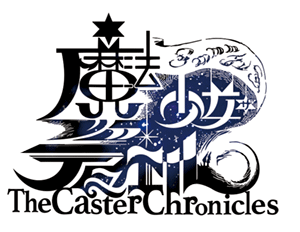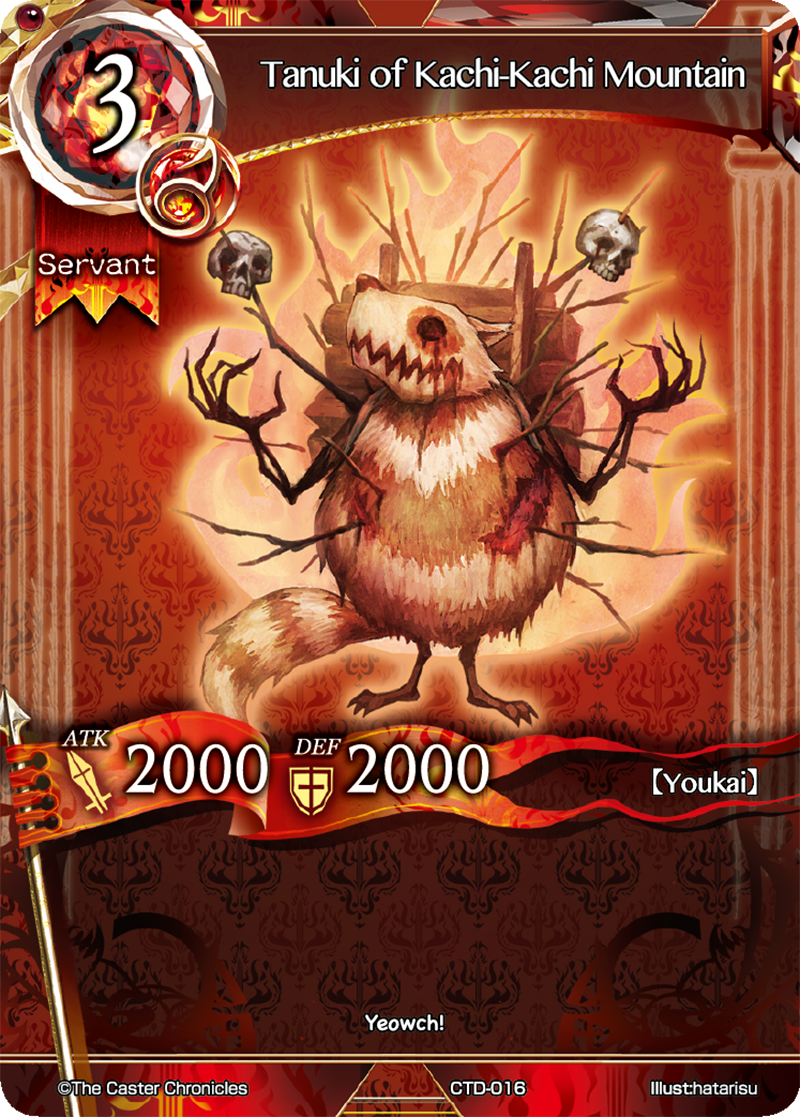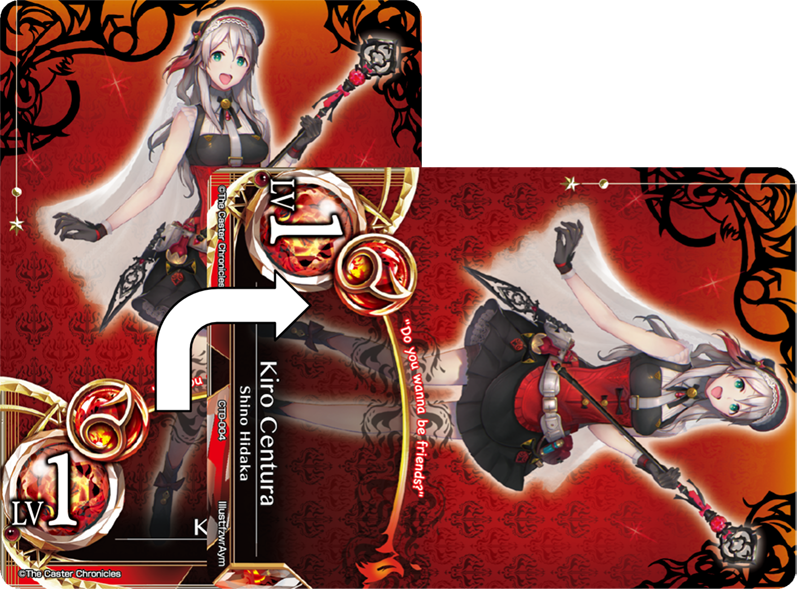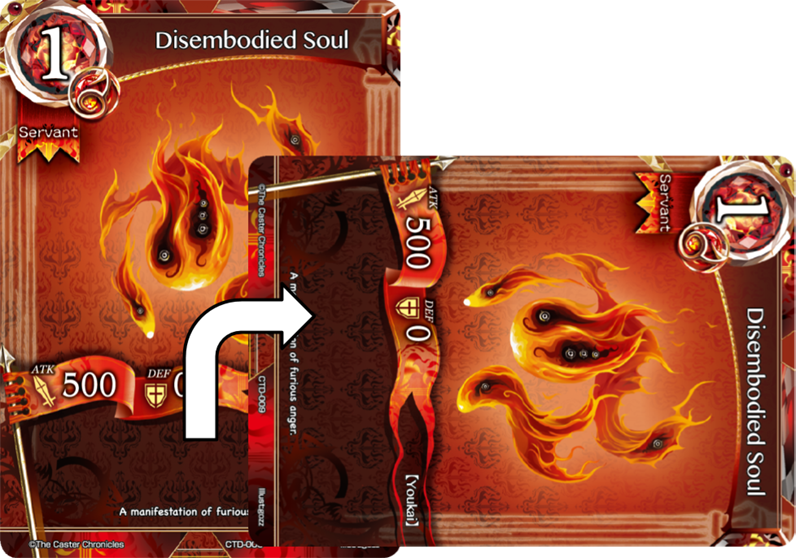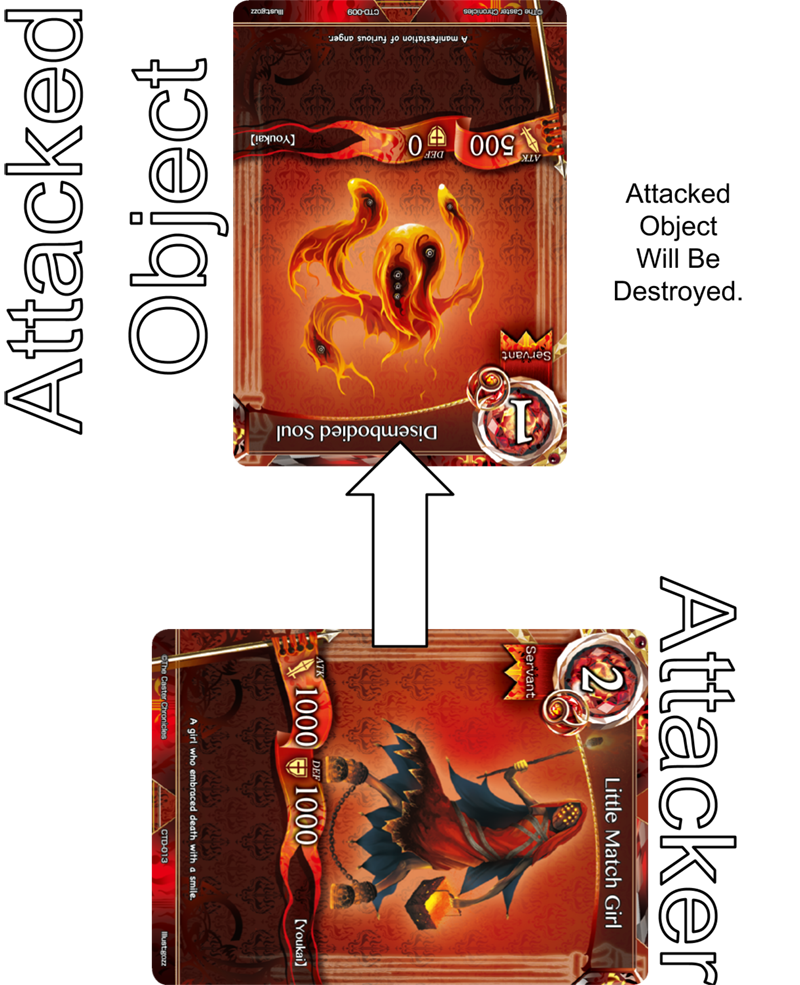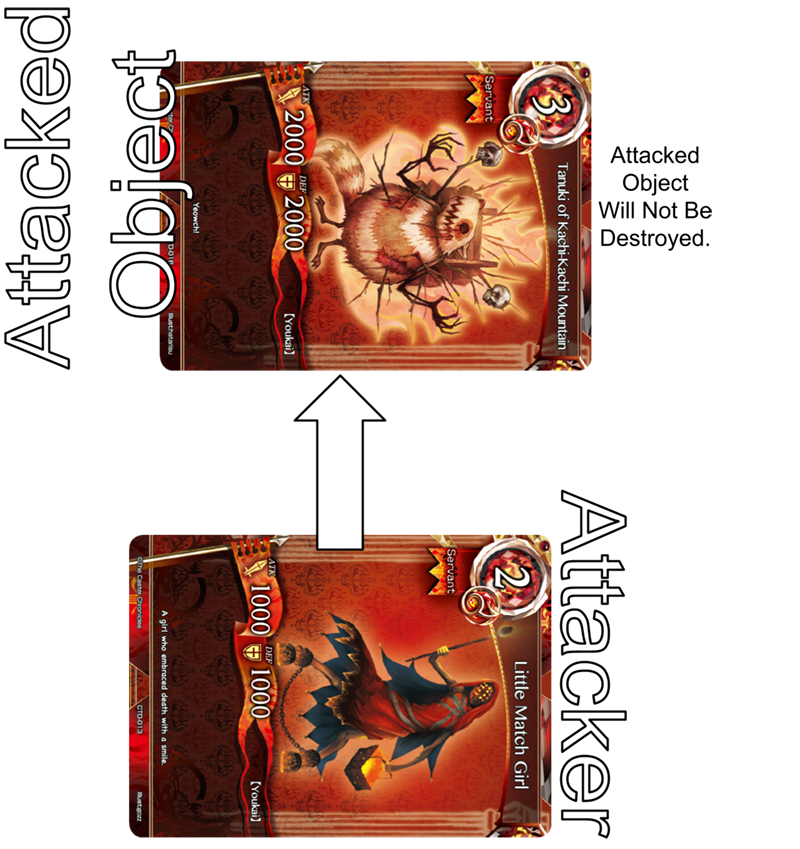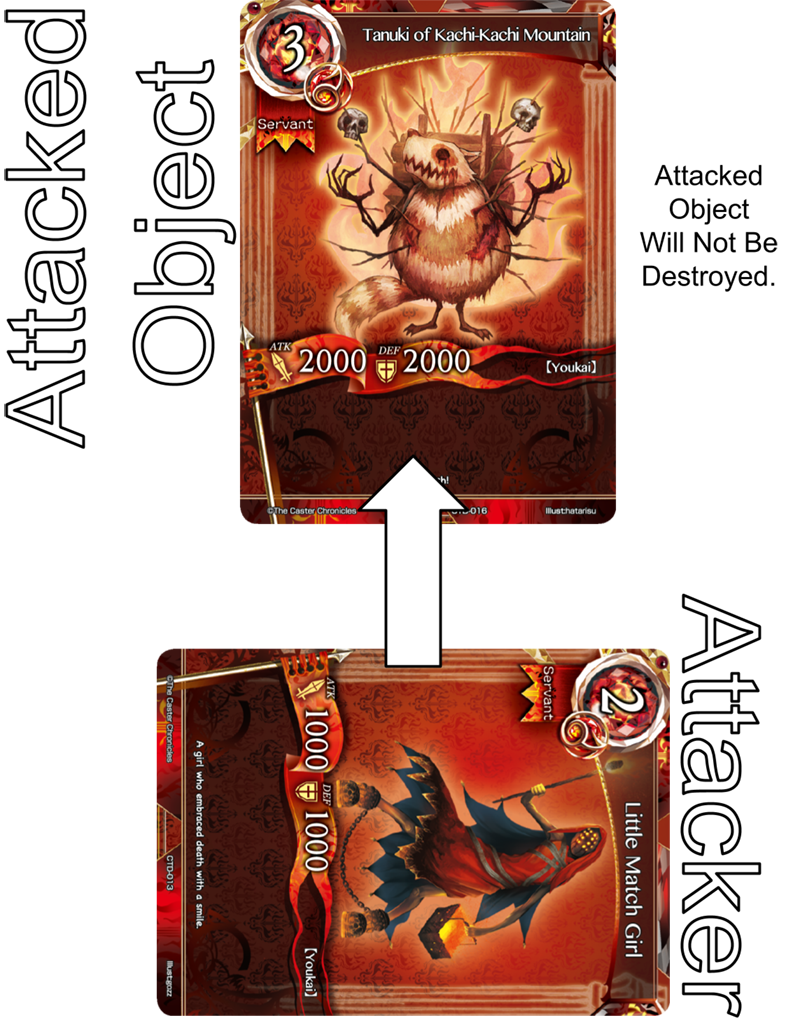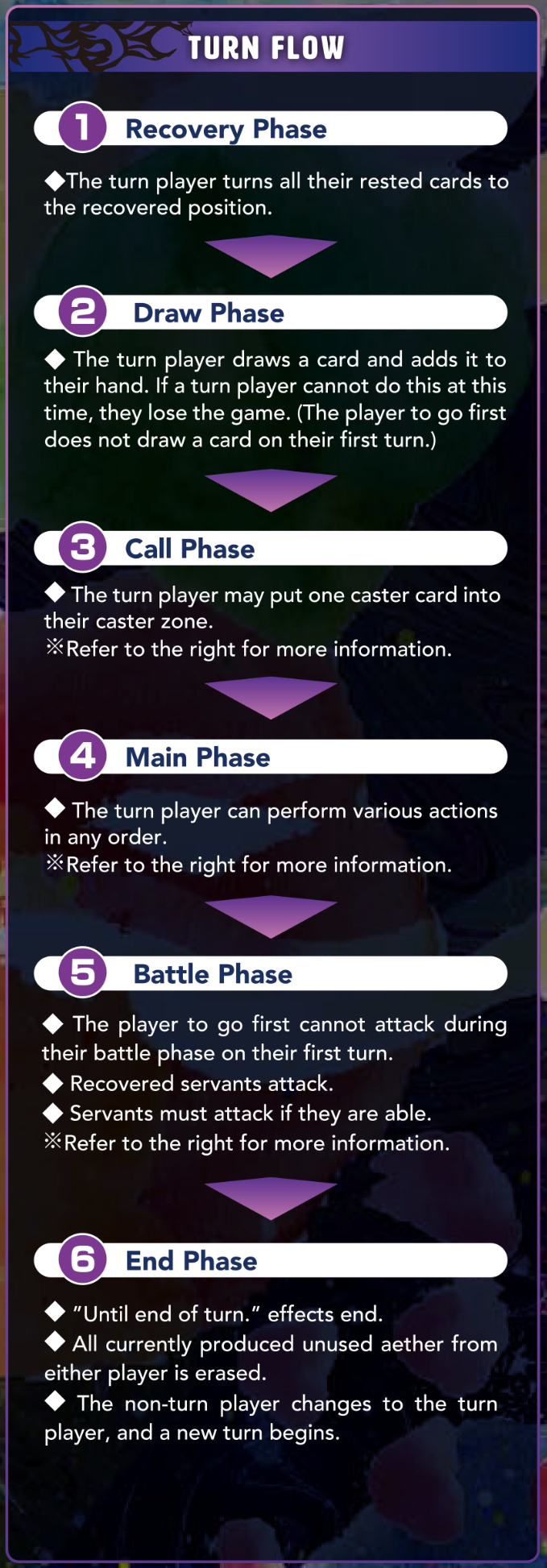The Basics
The Caster Chronicles Trading Card Game
Play caster cards to generate aether, which you then use to play servants, conjures, and barriers to attack your enemy.
In this turn based game, players trade off amassing the game’s resource, called aether. They then use that aether to summon servants, use conjures and barriers for support. By using your forces you can attack your opponent. Destroy all seven of your opponent’s orbs and then attack your opponent one final time to win the game!
The Game Space
- Hand- Cards you’re holding that can be played by paying their costs. Keep them hidden!
- Deck - You amass cards other than your J/ruler and magic stones to make this deck of at least 40 cards. At the beginning of each of your turns you draw the top card from the deck and add it to your hand. The cards in your deck are face down and their order is randomized.
- Servant Zone - This is where servants and barriers go when they are played.
- Caster Zone - This is where casters go when they are played.
- Field - This is made up of your and your opponent’s servant zones, and caster zones.
- Graveyard - Cards with one time effects that have been used up, or cards that have been destroyed are sent here. All cards in the graveyard are face up and anyone can look at them, but the order of the cards in the graveyard cannot be changed.
- Orb Zone - This is where your orbs are placed at the start of the game.
Basic Glossary
| Servant | The primary soldiers that comprise your forces. They attack your opponent, and protect you from your opponent’s attacks. |
| Conjure | Spells that provide one time effects to support your strategy. Place these in the graveyard immediately after their effects resolve. |
| Barrier | Cards that sit on the field and provide a constant effect. |
| Aether | Playing servants, conjures, barriers, and certain abilities requires you to pay a certain amount of will. The exact amount is indicated on the card you wish to play. |
| Caster | These cards produce the aether necessary to play all manner of cards and abilities. |
| Draw | To take the top card of your deck and put it into your hand. |
| Recover | Recover refers to one of three positions cards may have. A ‘recovered’ card is a card that is placed vertically. To ‘recover’ a card is to turn a card so that it is placed vertically. |
| Rest | Rest refers to one of three positions cards may have or a type of cost. A ‘rested’ card is a card that is placed horizontally. If a cost has the  icon, it means you must change that card from the recovered
position to the rested position to pay that cost. sThis kind of cost cannot be paid by resting cards that are already in the ‘rest’ position. icon, it means you must change that card from the recovered
position to the rested position to pay that cost. sThis kind of cost cannot be paid by resting cards that are already in the ‘rest’ position. |
| Reverse | Rest refers to one of three positions cards may have or a type of cost. A ‘reverse’ card is a card that is placed vertically, but upside down. To ‘reverse’ a card is to turn a card so that it is placed vertically and upside down. |
| Allied | You/Your. |
| Enemy | Opponent/Opponent’s. |
Using Aether To Play Cards and Abilities
The card featured here has a total cost of three (shown in the upper left of the card), one of the aether must be the same attribute of the card, and the remainder may be aether of any kind.
Thus to play this card, we’ll need to rest at least one Ignus caster to produce one Ignus aether. Then we can rest two more casters of any element, for a total of three aether. Once we have all three necessary aether produced, we can use them to pay this card’s cost and play it from our hand.
Procuring Casters
During your Call Phase, once per turn, you may choose to do one of the three following things. This action is referred to as ‘calling a caster’.;
- Play a caster card from your hand face up into your caster zone.
- Put any card from your hand face down into your caster zone as a level 1 caster that can produce only aether of no element.
- Put a caster from your hand on top of another caster one level lower that is either face down or has the same name. If there is already an allied caster in the field with the same name, you must put the one from your hand on top of it if you choose to play a caster this way. (Referred to as a caster level up.)
*Remember that you cannot have two casters with the same name face up in your caster zone.
About Casters
By resting ( ) casters you have called, you can produce aether to pay the cost of cards in your hand. Any unused aether you have produced at the end of a turn ceases to exist, so be sure to use it before
this clearing step.
) casters you have called, you can produce aether to pay the cost of cards in your hand. Any unused aether you have produced at the end of a turn ceases to exist, so be sure to use it before
this clearing step.
What You Can Do With Aether
- Play a servant - By paying a servant’s cost listed in the upper left corner of the card, you may put the servant into your field. Unless otherwise stated, you may only play servants during the main phase of your own turn.
- Play a conjure - By paying a conjure’s cost listed in the upper left corner of the card, you can play the card to gain its effects.
- Play a barrier - By paying a barrier’s cost listed in the upper left corner of the card, you can put the barrier into your field. Unless otherwise stated, you may only play servants during the main phase of your own turn.
Chase
‘To chase’ means to respond to your opponent’s card or ability with a card or ability of your own that takes precedence over theirs, resolving first. In this way you can play a card or ability that can counter the one your opponent is trying to play. Be careful though, as your opponent can chase to your cards and abilities as well, including chasing to your card or ability that you chased to your opponents! Players may chase as many times as they like, piling up more cards and abilities, so long as they have the aether to pay for them. When neither player wishes to add any more cards to the chase, the last card played in the chase is the first card to be resolved, then the second to last, and so on. Players may only chase to other cards or abilities with cards that have [Quickcast] or abilities.
About Battle
During your turn, all of your recovered servants must attack a slong as they are able. You choose the order in which they attack, however.
- The turn player chooses a recovered servant to be the attacker. If they cannot do this, the battle phase ends.
- The attacking servant may choose to attack either an enemy servant (in any position!) or the enemy player. However, if there are any reverse position enemy servants, the attacking servant cannot attack the enemy player.
- Change the attacking recovered servant to the rested position.
- Adhere by the following
- If the attacked object is a servant, compare the attacking servants ATK to the attacked servant’s relevant stat (ATK for recovered and rested servants, DEF for reversed servants). If the attacking servant’s ATK is higher, the attacked servant is destroyed. If the compared values are equal or if the attacked servant’s relevant stat is higher, the attack ends with nothing happening.
- If the servant is attacking the enemy player, the attacking player chooses an enemy orb to corrupt. (When an enemy orb is corrupted, its owner adds that card to their hand.) If there are no enemy orbs when a servant declares an attack on the enemy player, you win the game!
About Break
Break is an ability that some cards have. When one of your orbs is corrupted and added to your hand. If that card (orb) has [Break] you may play that card immediately without paying it’s cost, even if it doesn’t have [Quickcast]!
You may choose not to play the card for free with [Break] at this time if you so desire, however this is your only chance to play it for free via its [Break] ability. If you choose not to play it via its [Break] ability during this time it becomes the same as any other card and must be paid for like any other card.
Starting The Game
-Randomly choose a player, and that player must go first.
-Each player draws seven cards to form their hand.
-Each player takes the top seven cards of their deck face down and puts them into their orb zone.
-Each player may then put any number of cards from their starting hand on the bottom of their deck in any order and draw that many cards. Each player may only do this once.
- The randomly chosen player becomes the turn player. The other player gets a coin that can produce a single aether of no element once during the game. Then the game begins.
Turn Order
-
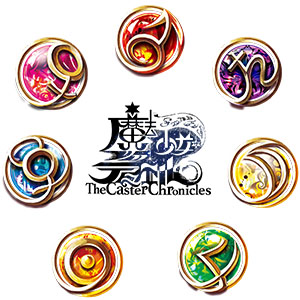
What's The Caster Chronicles?
Build a deck of cute magical girls and strange monstrous servants in a simple and exciting game.
-

Student Roster
Meet the casters of the academy.
-
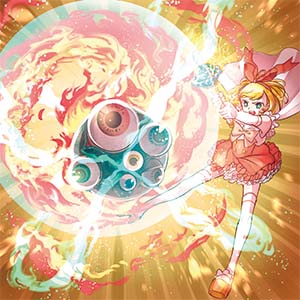
Learn to play The Caster Chronicles
Learn the game basics and get acquainted with the cards.
-
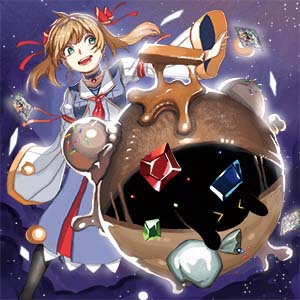
Beginner's Guide
You’ve learned the rules, so what’s next? Check here to find out.
-
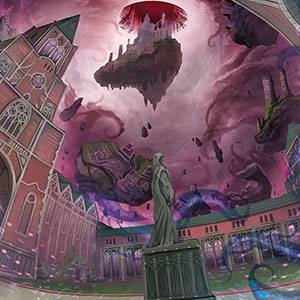
Manual Download
Download the playsheet and playmat
